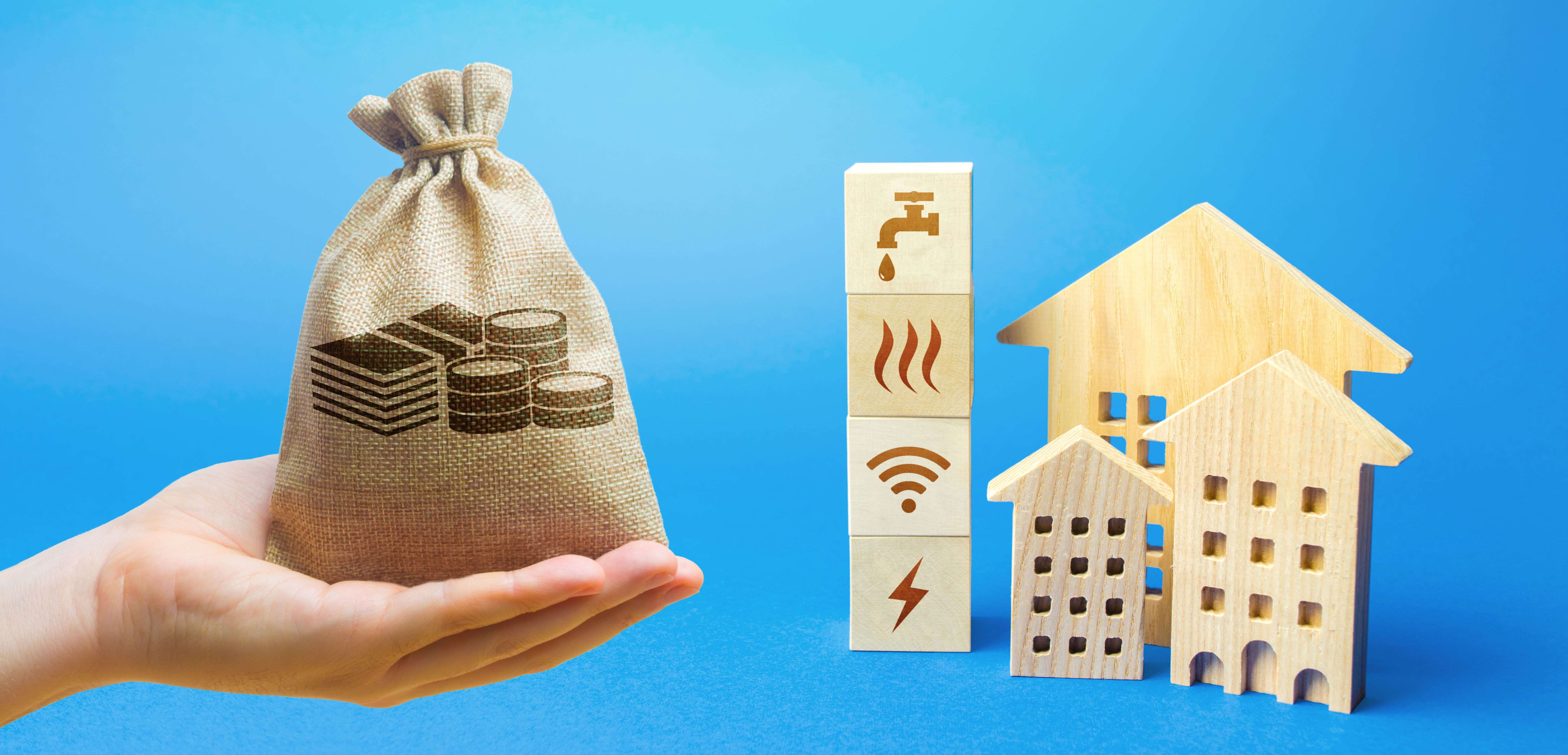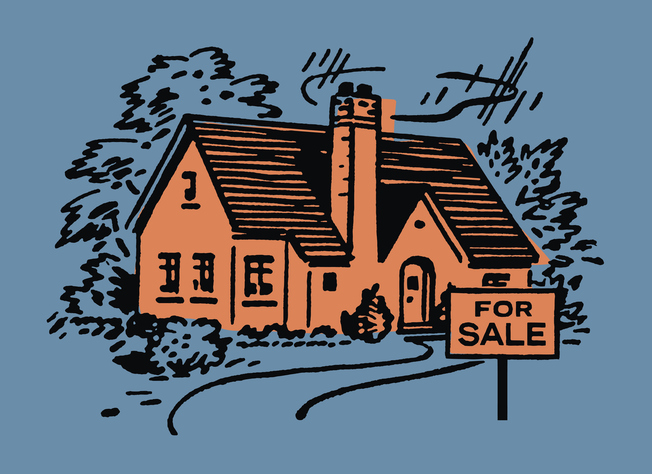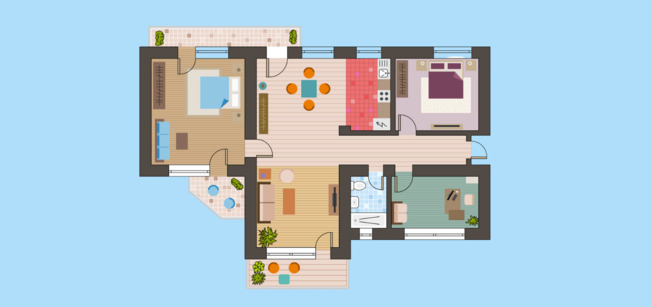
Apartment Utilities: The What, Who & How
Feb 18, 2022
Understanding the "what," "who," and "how" of apartment utilities starts with asking questions well before you get your lease agreement. For example, some property managers expect renters to pay for hot water as part of their electric bill, while others include it as part of heat expenses. This guide outlines what utility bills you'll typically find in apartments for rent, who usually pays for what, and how to figure out how much your utility bills might be.
What are utilities in an apartment?
Apartment utilities are the everyday essentials that make a place livable such as electricity, water, sewer, and gas/oil. Waste pickup is also often considered a utility even though no connection/hook-up is required.
To recap, basic apartment utilities typically include:
- Electricity: A standard connection
- Water: A standard well or municipal connection that is connected to a water heater or boiler
- Heat: Connection and a thermostat for natural gas, oil, or electricity
- Sewer: A standard septic or municipal connection
- Waste: Trash disposal and recycling pickup
Beyond the common utilities listed above, there are additional optional types of utilities that are not essential for habitability such as cable, phone, internet, streaming services, and security system connections.
Which brings us to the all-important question of which utilities are included in your rent and which utilities renters should expect to have to pay for themselves.
What utilities do you pay in an apartment?
Some landlords and property managers pay for basic utilities on their renters' behalf and simply factor that into the cost of the monthly rent. This arrangement is referred to as "utilities included" and eliminates the need for renters to pay multiple public utility companies directly. Note that "utilities included" generally relates only to the essential utilities that make an apartment habitable such as electricity, water, gas/oil, sewer, and trash disposal. If you want extras like internet, phone, or cable, you will still need to set those up yourself and pay for those on your own.
If an apartment is not explicitly marketed as utilities included, figuring out which utilities (if any) the landlord or property manager cover is important. The best way to eliminate confusion regarding who pays for what apartment utilities is to ask questions upfront when touring a property rather than waiting until you see the rental agreement to find out what utilities are included in your rent.
In almost all instances, renters are expected to pay for optional utilities such as:
- Cable
- Phone
- In-unit Internet (WiFi)
- Streaming services
Common utilities that landlords or property managers often cover include:
- Water
- Sewer
- Waste Removal
When it comes to who pays for the following utilities, there's more gray area:
- Electricity
- Heating
- Cooling
- Security systems
There's a gray area here because, while electricity is supplied to the unit and there's a heating system installed, the monthly bills for these utilities may or may not be covered. Living in a warm climate, you can expect air conditioning to drive up electricity costs. In colder climates, heating rates can increase monthly bills.
You'll also find that some landlords require tenants to pay for hot water. If so, you might want to take shorter showers and use the cold water setting on your washer. Some landlords in apartment complexes include security system installations but require tenants to pay the monthly subscription.
How to set up utilities in an apartment?
Before starting this process, your landlord might include suggestions for utility service providers in the lease agreement. That way, it's easier for you to figure out which companies to contact for the apartment's location. Use the following steps for setting up utilities:
Step one: Set up a move-in date with the landlord
After signing the rental agreement, paying the security deposit, and paying the first month's rent, it's time to set up a move-in date with the landlord. You'll want utilities set up and ready to go on your move-in date.
Step two: Confirm who is responsible for what
Even though you'll find this information in your rental agreement, ask your landlord to confirm who is responsible for setting up, managing, and paying for specific utilities. The last thing you want to do is fill an oil barrel your landlord is responsible for taking care of as part of your agreement.
Step three: Research utility companies
After receiving a list of recommendations from your landlord, research other utility companies you might need. For example, if your landlord recommends a heating fuel supplier but not an electric company, it's your responsibility to research this utility company and determine their monthly rates. Suppose you don't receive a list of recommendations, research utilities for your local area. You might find this information on your municipality's website.
Step four: Set up connection dates
After determining which utility companies are available in your new apartment's area, it's time to schedule connection dates. Ask the company if someone needs to be in the apartment when service connections occur. Then ask them when you can expect to be able to use your services. That way, you know that you'll have the utilities you need (like electricity, for example) when you start moving items into your new apartment.
How much are utilities in an apartment?
There's no concrete answer to how much you can expect to pay for your apartment's utilities – the main reason is that these costs depend on several factors. Some variables that could potentially affect the average cost of utilities include:
- The apartment's location
- The apartment's size (for example, if it's a one or two-bedroom apartment)
- The services you need
- Your consumption and usage
- Rates set by utility providers
Rates vary depending on location. For example, if the landlord pays for heat in New Mexico and not electricity, expect to pay a higher electric bill to account for air conditioning. Or, if the landlord doesn't pay for heat in Maine, expect to pay for the electricity necessary to run the heating unit and the fuel (like electricity, natural gas, or oil) needed to create the heat. If utilities are not included, don't be afraid to ask the landlord or property manager if they can provide you a ballpark figure based on past renters to help you budget as needed.
The Bottom Line
There's more to apartment hunting than the monthly rent. When figuring out how much you can afford, renters must take into account apartment utilities. In addition to asking upfront about which utilities are included, be sure to read your lease agreement carefully to confirm that what's in writing is consistent with what you've been told.
If you're considering apartments for rent where utilities are not included, here are a few tips on how to lower your heating bill and other monthly bills. In cold climates where oil and natural gas bills will be higher during the winter, you may be inclined to turn the heat way down when you're not home and crank it back up again upon your return, but keeping your thermostat set at a steady temperature (not too high, of course) is more cost-effective. In warm climates, remember that an air conditioner isn't the only way to cool an apartment—window coverings can help, too. Another way of reducing costs is by choosing energy-efficient light bulbs, washing machines, and small appliances.
Top cities
Atlanta Apartments
1,623 apartments starting at $700/month
Austin Apartments
4,704 apartments starting at $585/month
Baltimore Apartments
1,283 apartments starting at $475/month
Boston Apartments
5,059 apartments starting at $425/month
Charlotte Apartments
2,691 apartments starting at $700/month
Chicago Apartments
6,234 apartments starting at $506/month
Dallas Apartments
5,698 apartments starting at $600/month
Fort Worth Apartments
2,687 apartments starting at $500/month
Houston Apartments
5,343 apartments starting at $564/month
Las Vegas Apartments
1,126 apartments starting at $650/month
Los Angeles Apartments
11,312 apartments starting at $642/month
Miami Apartments
658 apartments starting at $800/month
Milwaukee Apartments
1,164 apartments starting at $545/month
New York Apartments
4,684 apartments starting at $599/month
Oakland Apartments
793 apartments starting at $850/month
Orlando Apartments
864 apartments starting at $700/month
Philadelphia Apartments
2,818 apartments starting at $500/month
Phoenix Apartments
4,159 apartments starting at $500/month
Pittsburgh Apartments
774 apartments starting at $600/month
Portland Apartments
2,019 apartments starting at $649/month
Raleigh Apartments
1,204 apartments starting at $750/month
San Antonio Apartments
3,788 apartments starting at $500/month
San Diego Apartments
2,527 apartments starting at $650/month
San Francisco Apartments
502 apartments starting at $830/month
San Jose Apartments
420 apartments starting at $1,150/month
Seattle Apartments
2,919 apartments starting at $695/month
Tampa Apartments
836 apartments starting at $800/month
Washington DC Apartments
2,250 apartments starting at $910/month


